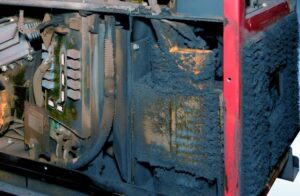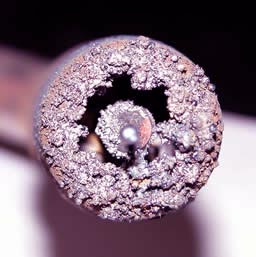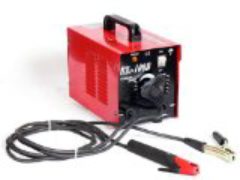Taking care of welder systems usually do not require much effort, but it can save in the long run significant time and money, helps avoid costly repairs.
Maintenance requires different operations depending on a type of the welding system. SMAW (Stick) welding equipment requires little maintenance. GMAW (MIG ) and GTAW (TIG) welders need more attention.
Most important – always make sure the wire feeder is powered off before inspecting or cleaning the welder components.
1. Stick Welding systems maintenance
In Stick (SMAW) the majority of the equipment components are inside the welder, so stick welders requires the least amount of maintenance.

The ground clamp and electrode holder wear over time, so you need to monitor their condition and replace when needed. But even these elements don’t require a day-to-day maintenance.
You will want in a long term have a technician check of the welder for a buildup of dust and grime on wiring, transformers, cooling fans and PC boards. It will help to cool the components efficiently and prolong the service life of the system.
2. Welder Maintenance – GMAW (MIG) Welders
Wire welders, unlike stick ones, include many peripheral items – including the gun contact tips, gun liner, and the shielding gas hose. So MIG systems require significantly more and attention and regular care.

When the wire runs across steel drive rolls, it can introduce a great deal of dust and dirt. To reduce the buildup of grime, you need to blow out with compressed air the inside of machine feeder section at least once a week. Sometimes you need to remove the rolls and clean them.
When wire runs into the gun liner and through the drive rolls, it can create dust and dirt buildup in the liner. Again, you need to blow out with compressed air the to remove accumulated dust liner approximately once a week, especially when using your welder from time to time.
The gun nozzle, while welding often becomes filled with spatter. Keep the nozzle clean to avoid inhibiting the flow of gas. To prevent damage, store the nozzle in a manufacturers packaging.
Gun contact tips eventually need replacing. The hole diameter in the tip will elongate after significant use, affecting wire placement in the joint. Tips wear out and also become covered in spatter. This is a signal that it’s time to purchase a new one.
3. Welder Maintenance – TIG Welders
You need to remove a faulty regulator for repair from service immediately.
A faulty regulator indicates the following symptoms:
– Gas leaks externally.
– If pressure continues to rise when the downstream valve closed.
Do not attempt to repair a faulty regulator. It needs special techniques and tools.
4. Oxyfuel Equipment Maintenance
Maintenance of oxyfuel and gas welding equipment is more extensive due to the fact that any excessive damage or wear to pressure parts can cause very serious trouble. The piping and oxygen/gas manifolds need to be inspected every day for leaks or cracks.
Apply the water and soap solution similar to how you would check for a leak in a bicycle inner tube over the hoses evenly, and watch for any bubbles that may appear.
Another critical component is the flash arrestor which is used to prevent oxygen from passing into the acetylene lines. Arrestor needs to be kept in top-notch condition at all times. Always immediately replace any defective regulators or gauges.
By following maintenance, a good welder can run dependably for decades. These machines are tested for durability and use typically high quality components.
Always refer to the equipment manufacturer’s manual for a thorough explanation of maintenance and safety.




